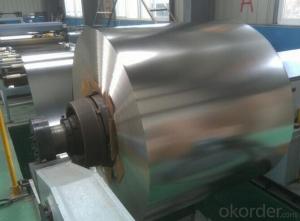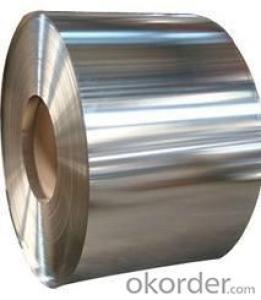Electrolytic Tinplate in Coils for Can Packaging
- Loading Port:
- Tianjin
- Payment Terms:
- TT OR LC
- Min Order Qty:
- 25 m.t
- Supply Capability:
- 7000 m.t/month
OKorder Service Pledge
OKorder Financial Service
You Might Also Like
1.Structure of Electrolytic Tinplate in Coils for Can Packaging Description
Electrolytic Tin Plate Coils and Sheets for Foods Metal Packaging, is one thin steel sheet with a coating of tin applied by electrolytic deposition. Tinplate made by this process is essentially a sandwich in which the central core is strip steel. This core is cleaned in a pickling solution and then fed through tanks containing electrolyte, where tin is deposited on both sides. As the strip passes between high-frequency electric induction coils, it is heated so that the tin coating melts and flows to form a lustrous coat.
2.Main Features of the Electrolytic Tinplate in Coils for Can Packaging
Appearance – Electrolytic Tin Plate is characterized by its beautiful metallic luster. Products with various kinds of surface roughness are produced by selecting the surface finish of the substrate steel sheet.
Paintability and printability – Electrolytic Tin Plates have excellent paintability and printability. Printing is beautifully finished using various lacquers and inks.
Formability and strength – Electrolytic Tin Plates have got very good formability and strength. By selecting a proper temper grade, appropriate formability is obtained for different applications as well as the required strength after forming.
Corrosion resistance – Tinplate has got good corrosion resistance. By selecting a proper coating weight, appropriate corrosion resistance is obtained against container contents. Coated items should meet 24 hour 5 % salt spray requirement.
Solderability and weldability – Electrolytic Tin Plates can be joined both by soldering or welding. These properties of tinplate are used for making various types of cans.
Hygienic – Tin coating provides good and non toxic barrier properties to protect food products from impurities, bacteria, moisture, light and odours.
Safe – Tinplate being low weight and high strength makes food cans easy to ship and transport.
Eco friendly – Tinplate offers 100 % recyclability.
Tin is not good for low temperature applications since it changes structure and loses adhesion when exposed to temperatures below – 40 deg C.
3.Electrolytic Tinplate in Coils for Can Packaging Images
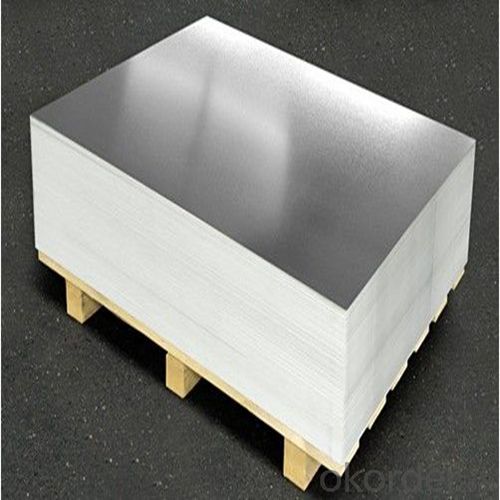
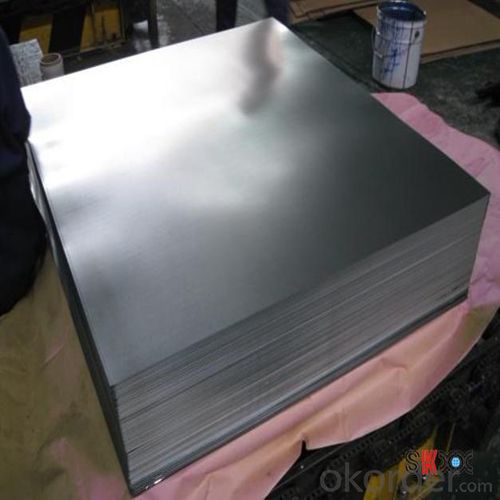
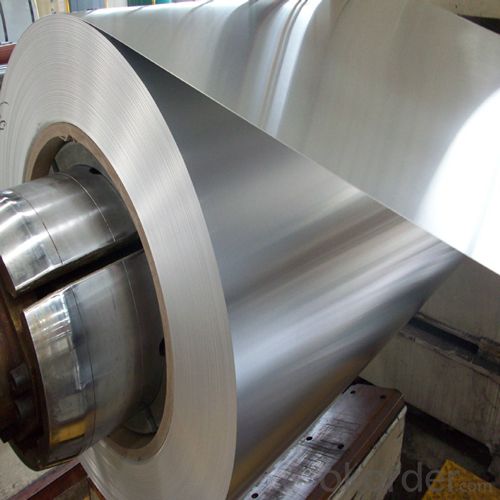
4.Electrolytic Tinplate in Coils for Can Packaging Specification
Standard | ISO 11949 -1995, GB/T2520-2000,JIS G3303,ASTM A623, BS EN 10202
|
Material | MR,SPCC |
Thickness | 0.15mm - 0.50mm |
Width | 600mm -1150mm |
Temper | T1-T5 |
Annealing | BA & CA |
Coil Inner Diameter | 508mm |
Weight | 6-10 tons/coil 1~1.7 tons/sheets bundle |
Passivation | 311 |
Oil | DOS |
Surface | Finish,bright,stone,matte,silver |
5.FAQ of Electrolytic Tinplate in Coils for Can Packaging
- How are the Electrolytic Tin Plates specified?
The Electrolytic Tin Plates are specified as per the steel base, extent of tempering, the coating weight, annealing method and the surface finish.
- How many types there are for base steels?
The base steels are of three types: Type MR, L, D
- Q:What are the main factors influencing the competitiveness of tinplate manufacturers?
- The main factors influencing the competitiveness of tinplate manufacturers include technological advancements, production efficiency, product quality, pricing strategy, market demand, distribution channels, and the ability to meet customer requirements and provide tailored solutions. Additionally, factors such as raw material availability, supply chain management, branding, and industry regulations also play a significant role in determining a tinplate manufacturer's competitiveness.
- Q:How does tinplate packaging contribute to reducing food waste?
- Tinplate packaging helps reduce food waste by providing a durable and airtight barrier that protects food from spoilage, contamination, and exposure to air, moisture, and light. It helps extend the shelf life of products, preserving their freshness and nutritional value for longer periods. Additionally, tinplate packaging is highly recyclable, making it a sustainable choice that reduces the environmental impact of food packaging waste.
- Q:What are the main applications of tinplate in the telecommunications industry?
- Tinplate has several main applications in the telecommunications industry, including the production of high-frequency cables and connectors, as well as the shielding of electronic components. Due to its excellent conductivity and corrosion resistance, tinplate is widely used in telecommunications infrastructure to ensure reliable signal transmission and protect sensitive equipment from electromagnetic interference.
- Q:What are the common defects in tinplate?
- Some common defects in tinplate include rust spots, black specks, pinholes, and uneven coating.
- Q:What are the different ways tinplate packaging can be decorated?
- There are several different ways tinplate packaging can be decorated, including lithography, embossing, printing, and labeling. Lithography involves applying a design or image onto the tinplate using a printing process. Embossing creates raised or recessed designs on the surface of the tinplate, adding texture and dimension. Printing can be done using various techniques such as screen printing, flexography, or digital printing to apply graphics, logos, or text onto the tinplate. Lastly, labeling involves attaching pre-printed labels onto the tinplate packaging, allowing for custom branding or labeling options.
- Q:What are the characteristics of different tin process
- Good mechanical properties: tinplate cans relative to other containers, such as plastic, glass, paper containers and strength, and good rigidity, it is not easy to break. It is not only used for small sale packing, but also the main container for large transportation package. 2.: excellent barrier tin barrier properties than any other materials are excellent, gas barrier properties, moisture resistance, shading and aroma were good, and the sealing is reliable, reliable protection products.
- Q:What are the main regulations governing the use of tinplate in different industries?
- The main regulations governing the use of tinplate in different industries vary depending on the country and specific industry. However, some common regulations include standards for food contact materials, such as the Food and Drug Administration (FDA) regulations in the United States, which ensure the safety of tinplate used in packaging food and beverages. Other regulations may pertain to health and safety standards, recycling and waste management practices, and environmental regulations related to the production and disposal of tinplate. It is important for businesses to comply with these regulations to ensure the safe and responsible use of tinplate in different industries.
- Q:How does tinplate compare to tin-free steel in terms of properties and applications?
- Tinplate and tin-free steel have distinct properties and applications. Tinplate, which is steel coated with a thin layer of tin, offers excellent corrosion resistance, formability, and solderability. It is commonly used in the food and beverage industry for making cans, containers, and closures due to its ability to preserve the product's quality and prevent contamination. On the other hand, tin-free steel, also known as electrolytic chromium-coated steel, provides superior paint adhesion, scratch resistance, and weldability. It finds applications in manufacturing various products like aerosol cans, automotive parts, and appliances that require durability and aesthetic appeal. Ultimately, the choice between tinplate and tin-free steel depends on the specific requirements of the application at hand.
- Q:How does tinplate compare to paperboard in terms of packaging applications?
- Tinplate and paperboard have different characteristics that make them suitable for different packaging applications. Tinplate is known for its durability, resistance to moisture, and ability to provide a barrier against light, air, and odors. It is commonly used for packaging food and beverages, especially canned goods, as well as for aerosol cans and metal containers. Paperboard, on the other hand, is lightweight, flexible, and easily customizable. It is often used for packaging dry goods such as cereal boxes, pharmaceuticals, cosmetics, and certain types of food. Both materials have their strengths and weaknesses, and the choice between them depends on factors such as the specific product being packaged, desired shelf life, branding requirements, and environmental considerations.
- Q:What are the advantages of using tinplate for household appliances?
- There are several advantages of using tinplate for household appliances. Firstly, tinplate is highly resistant to corrosion and rust, ensuring the longevity and durability of the appliances. Additionally, tinplate provides excellent heat resistance, making it suitable for appliances that generate high temperatures. Furthermore, tinplate is lightweight yet strong, allowing for easy handling and transportation of the appliances. Lastly, tinplate is a sustainable and eco-friendly material, as it is recyclable and reduces the carbon footprint of the manufacturing process.
1. Manufacturer Overview |
|
|---|---|
| Location | |
| Year Established | |
| Annual Output Value | |
| Main Markets | |
| Company Certifications | |
2. Manufacturer Certificates |
|
|---|---|
| a) Certification Name | |
| Range | |
| Reference | |
| Validity Period | |
3. Manufacturer Capability |
|
|---|---|
| a)Trade Capacity | |
| Nearest Port | |
| Export Percentage | |
| No.of Employees in Trade Department | |
| Language Spoken: | |
| b)Factory Information | |
| Factory Size: | |
| No. of Production Lines | |
| Contract Manufacturing | |
| Product Price Range | |
Send your message to us
Electrolytic Tinplate in Coils for Can Packaging
- Loading Port:
- Tianjin
- Payment Terms:
- TT OR LC
- Min Order Qty:
- 25 m.t
- Supply Capability:
- 7000 m.t/month
OKorder Service Pledge
OKorder Financial Service
Similar products
New products
Hot products
Hot Searches
Related keywords

